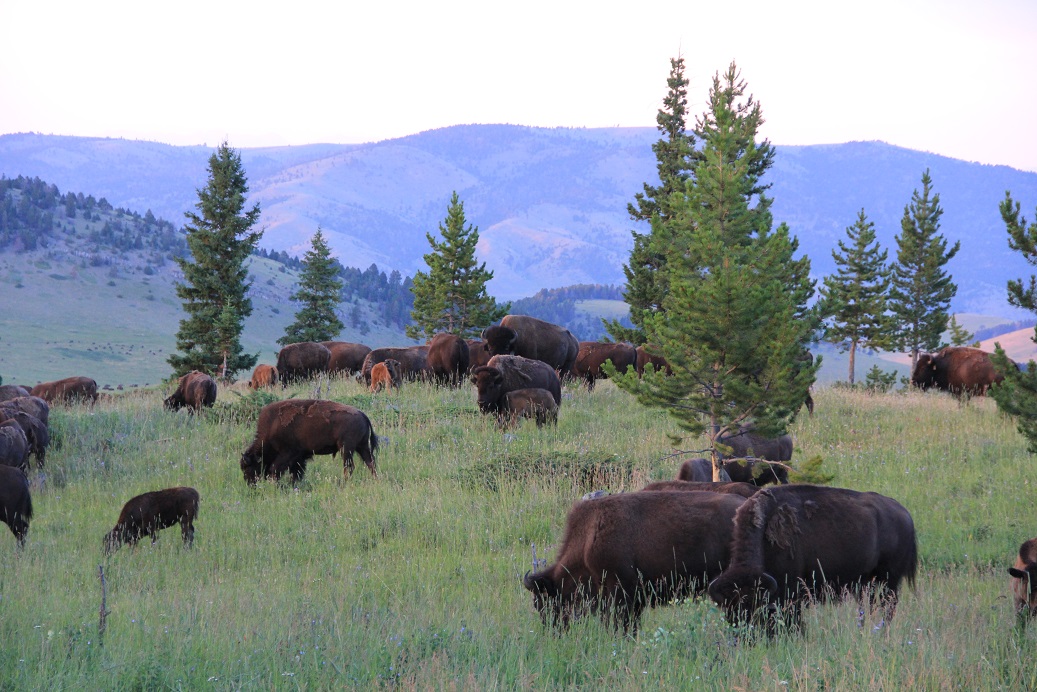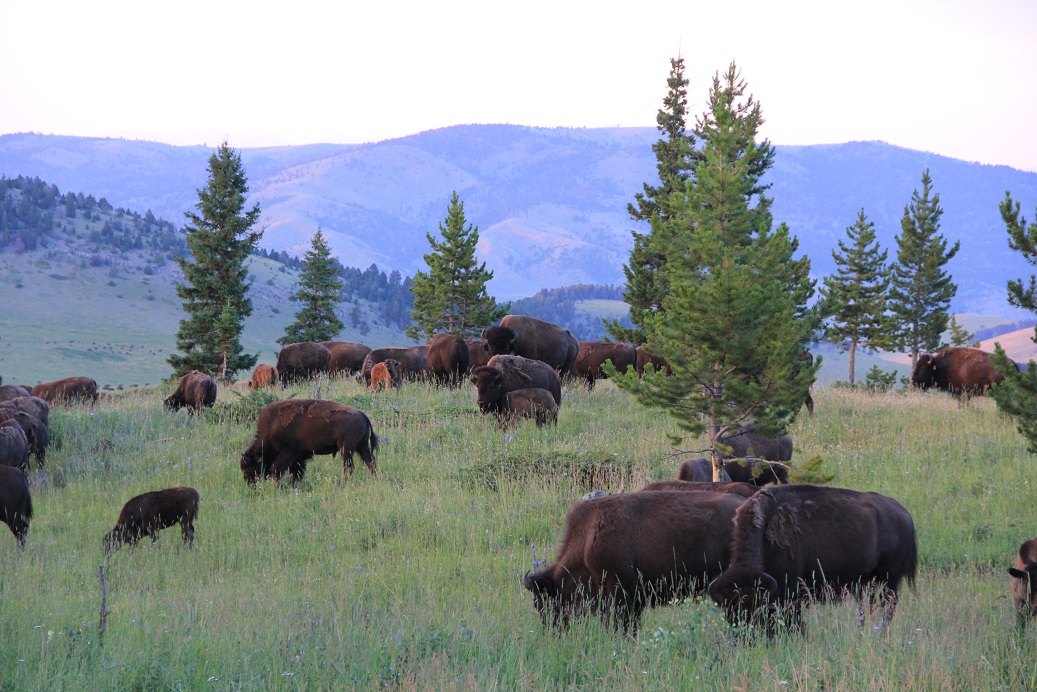Bison graze on the Flying D Ranch, Montana.
This Saturday, November 5th, we celebrate the North American bison for its cultural, ecological, economic, and historical significance.
What should you know about the National Mammal of the United States?
Bison on the Brink of Extinction
The bulk of the North American bison population was decimated between 1871 and 1884.
Before European settlement, it is estimated that 25-30 million bison roamed North America. In 1870, hunting and habitat destruction had wiped out the bison east of the Mississippi, but there were still at least 10 million on the western plains. By 1884, however, only a handful of bison remained, protected by a few entrepreneurial ranchers.
Their near extinction was due to a host of factors.
The climate was changing and the railroad interrupted their migratory corridor. The emergence of a horse culture and the introduction onf the Sharp’s rifle brought more efficient hunting. Additionally, government policy promoted the end of the bison as a means of calming hostilities with the Native Americans.
The California Gold Rush effectively separated the bison into a Northern herd and a Southern herd.
Beginning in 1849, a steady stream of settlers and hunters along the trail west created a bison-free corridor. When innovations in leather tanning spiked European demand for bison hides in the 1870s, the Southern herd was wiped out to satisfy the European market.
Contrary to popular belief, the great bison slaughter was not a tragedy of the commons.
Domesticated cattle were so much easier to handle, that bison became almost a nuisance on the plains. As ranchers needed more and more rangeland for profitable cattle operations, and as the demand for bison leather grew, bison became worth more dead than alive.
Bison Today
Market forces brought the bison to near extinction, and then brought them back from the brink.
In recent decades, as it has become affordable to get bison to the dinner table, commercial herds of bison have grown to over 500,000 head.
Today, Yellowstone is home to nearly 5,000 wild bison, descendants of the last free-roaming herds.
In the summer months, the bison are a huge draw for tourists, even causing traffic jams. In the winter, they migrate out of the park and pose problems for neighboring ranches. While surplus bison are usually sent to slaughter to mitigate the spread of disease to cattle, tribes and other ranchers and private conservationists have offered alternatives to culling.
Private conservationists continue to restore bison to the western landscape.
The folks at the American Prairie Reserve, who aim to restore bison herds to the prairie ecosystem, offer rewards programs for neighboring ranchers willing to adopt wildlife-friendly practices.
The Oglala Sioux and other tribes invest in bison to generate profits and return to their heritage.
The Oglala Sioux’s deal with the National Park Service may have fallen apart. However, the Osage Nation and Fort Peck’s Assiniboine and Sioux tribes have had success cooperating with media mogul-turned-rancher Ted Turner to restore bison management on their land.
Nobody understands the bison market better than Ted Turner.
His bison herds represent nearly 20 percent of the nation’s total bison population. By putting bison on the menu at his restaurants and others, he is working to take bison meat mainstream, noting that if private conservation doesn’t pay for itself, it doesn’t last.
For National Bison Day, consider ordering a bison burger as a celebration of our national mammal’s conservation and an assurance that there is demand to keep the bison alive.




